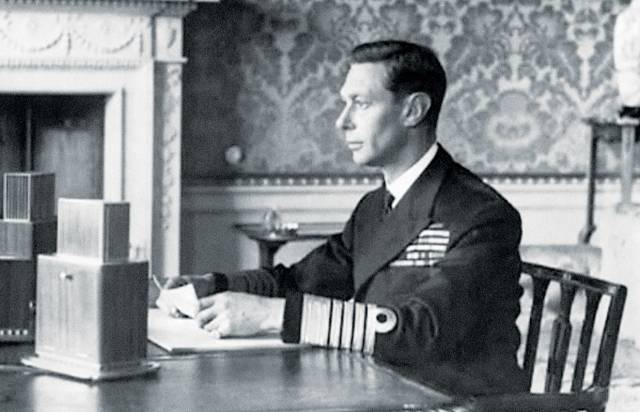
The King's speech

There are not many people who can claim to have taught a King how to speak!
Australian speech therapist Lionel George Logue became quietly famous in the late 1930s and became much better known when the film ‘The King's Speech’ was recently released starring actor Colin Firth as King George VI and Logue portrayed by Australian Geoffrey Rush.
Logue was born in Adelaide on 26 February 1880, the eldest of four children. He studied elocution to remove much of his Australian accent and after working at a gold mine at Kalgoorlie, settled in Perth with his wife Myrtle where he taught elocution, public speaking and acting.
He toured the world in 1911 and as a Christian Scientist was dedicated to healing. In World War I he used humour, patience and sympathy to treat servicemen suffering from speech impediments caused by shell shock. His lessons included exercises for the lungs and diaphragm and how to breathe deeply to help finish a sentence.
Logue moved to the famous Harley Street in London in 1924 and it was said that the fees paid by wealthy clients enabled him to accept and treat poorer patients without charge. Two years later he was consulted by the Duke of York who had a bad stammer. Logue believed it was caused by poor co-ordination between the larynx and diaphragm and suggested one hour be set aside each day to practice special exercises where the Duke loudly spoke each vowel for 15 seconds.
These exercises relaxed the tension which had caused the muscle spasms, restored the Duke's confidence and reduced the stammer to occasional blocks or hesitations. The success of the treatment was obvious when the Duke, without stuttering, opened the Australian Parliament in 1927 in Canberra.
Tongue-twisters were among the unusual treatments used by the therapist to help the Duke rehearse for major speeches and Logue also coached him for the formal language of his coronation in 1937. The film depicts the difficulties and frustration experienced by the Duke at his inability to speak fluently at public functions and how, with the assistance of Logue, he overcame the problem and successfully completed a major radio broadcast.
One of Logue's key phrases was ‘a slow, measured pace’ in delivery and this was best illustrated by the King's wartime broadcasts and speeches during World War II and the fact that Logue was with the King for the VE-day broadcast on 8 May 1945. He had been awarded the CVO in 1944, part of the only Order of Chivalry that specifically rewards acts of personal service to the Monarch.
Logue became a founding fellow of the College of Speech Therapists in London in 1944 and was a speech therapist to the Royal Masonic School at Bushey. He always retained his love of music and the theatre and enjoyed walking and gardening. During the Second World War, his practice decreased and he acted as an air-raid warden three nights a week.
Logue died in April 1953 in London. He was survived by his three sons and the funeral was attended by representatives of the Queen and the Queen Mother.
Lionel Logue was initiated, passed and raised in 1908 and became WM in 1919 in the St George's Lodge in Western Australia. The Duke of York, who became King George VI, became Master of Navy Lodge in 1921 and became permanent WM until he ascended the throne. It was stated by many that his stammer rarely became noticeable when he was involved in ritual.
Article extracted from Freemason magazine, March 2014, page 12.


